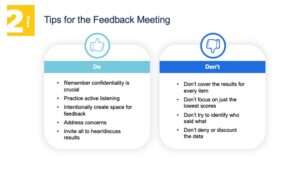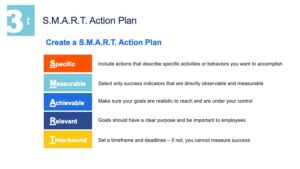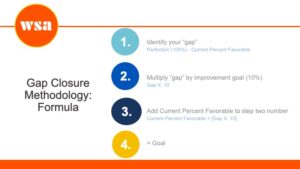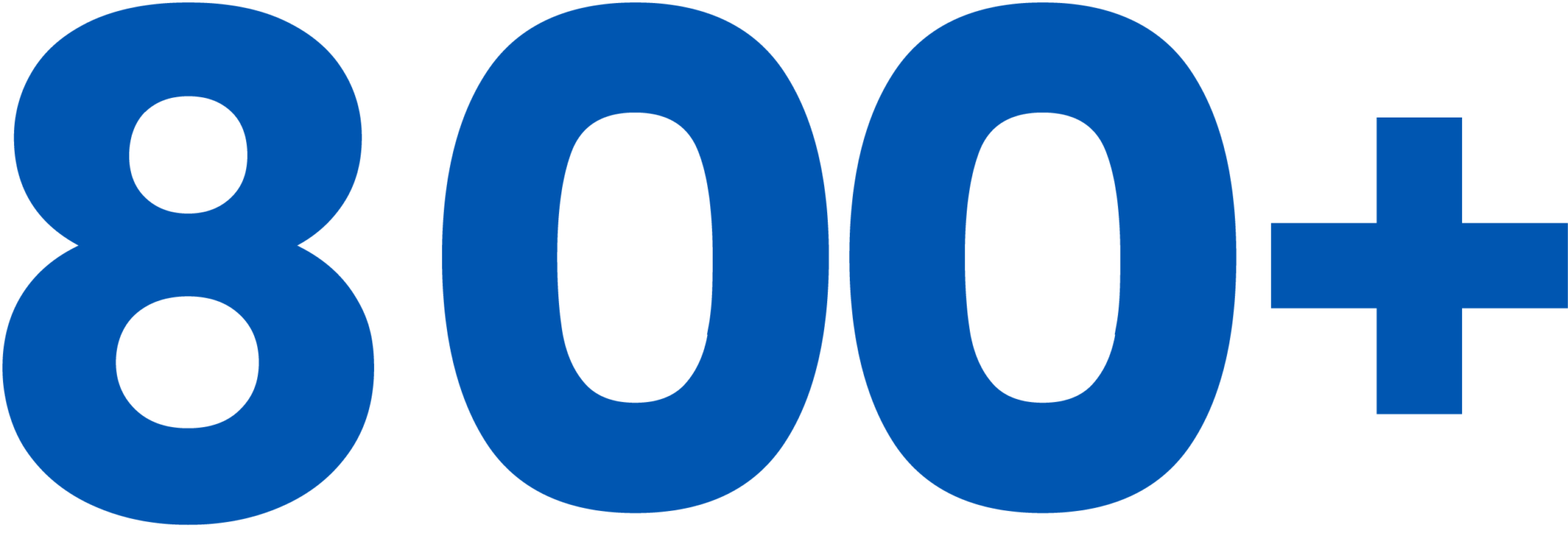During the July Learning Session, Sheena Lyons, an Executive Consultant at WSA, discussed the significance of action planning in driving employee engagement and enhancing organizational performance. Let’s dive into this session’s key insights and strategies, focusing on how businesses can effectively implement and benefit from a structured action planning model.
A successful employee engagement program hinges on translating survey results into meaningful actions. Without visible changes stemming from their feedback, employees are less likely to participate in future surveys, thereby stalling the entire engagement process. This is why the action planning phase is crucial. It not only drives improvements based on feedback but also builds trust and credibility within the organization.
Four-Step Action Model: Understand, Share, Act, Commit
A straightforward yet powerful four-step model for action planning includes:
Step 1: Understand
Analyze survey results to identify key areas for improvement. This involves using statistical analyses such as correlation or regression to pinpoint the most impactful drivers of engagement. It’s important to focus on the right issues, noting that not all items with low scores are necessarily the most impactful areas for improvement. By identifying key drivers through analyses like Pearson product-moment correlation, leaders can prioritize actions with the greatest return on investment.
Step 2: Share
Communicate the survey findings with your teams. This step involves holding feedback meetings to discuss results openly and encourage further employee input. Such meetings foster a culture of transparency and inclusivity. The importance of these meetings as trust-building exercises cannot be overstated, ensuring that employees feel their voices are heard and valued.

Step 3: Act
Develop and implement a SMART action plan (Specific, Measurable, Achievable, Relevant, Time-bound). Engaging the team in this process ensures that the actions taken are practical and aligned with the team’s capabilities and resources. When everyone is involved in creating and executing these plans, it promotes a sense of ownership and accountability among team members.

Step 4: Commit
Reinforce the commitment to ongoing improvement by regularly updating the team on progress and celebrating successes. This step emphasizes the continuous nature of action planning and helps maintain momentum. Continuous communication and reinforcement of the plan’s progress are vital to sustaining engagement and driving long-term success.
Strategic Goal Setting: The Gap Closure Method
Setting specific and challenging goals is an essential part of action planning. The Gap Closure Method is a strategy that helps organizations set realistic yet ambitious targets based on current performance metrics. By focusing on measurable improvement goals, companies can drive significant enhancements in engagement and overall performance. This method allows organizations to tailor their goals to specific contexts, ensuring that targets are achievable and impactful.
For instance, one manufacturing plant saw a significant reduction in turnover rates by focusing on high-impact engagement drivers identified through correlation analysis. By targeting specific areas, such as communication and development opportunities, they created a more supportive and engaging work environment. A case study from the hospitality industry showed that focusing on key drivers like trust in leadership and recognition led to a noticeable improvement in employee satisfaction and retention.

The Importance of Commitment and Communication
The success of any engagement initiative depends heavily on consistent action and communication. Organizations must commit to ongoing dialogue, regular updates, and visible changes to ensure employees feel heard and valued. The key to effective action planning is not just in the planning itself but also in persistent follow-through and adaptation based on feedback.
By implementing these strategies, businesses can create a culture of continuous improvement where employee feedback leads to tangible, positive changes. This not only enhances the employee experience but also contributes to overall organizational success.
For those who missed the session, we encourage you to watch the recorded webinar and consider how these insights can be applied within your organization. Effective action planning can transform your workplace, making it more engaging and productive for everyone involved.
Explore the entire WSA 2024 Monthly Learning Session schedule here

